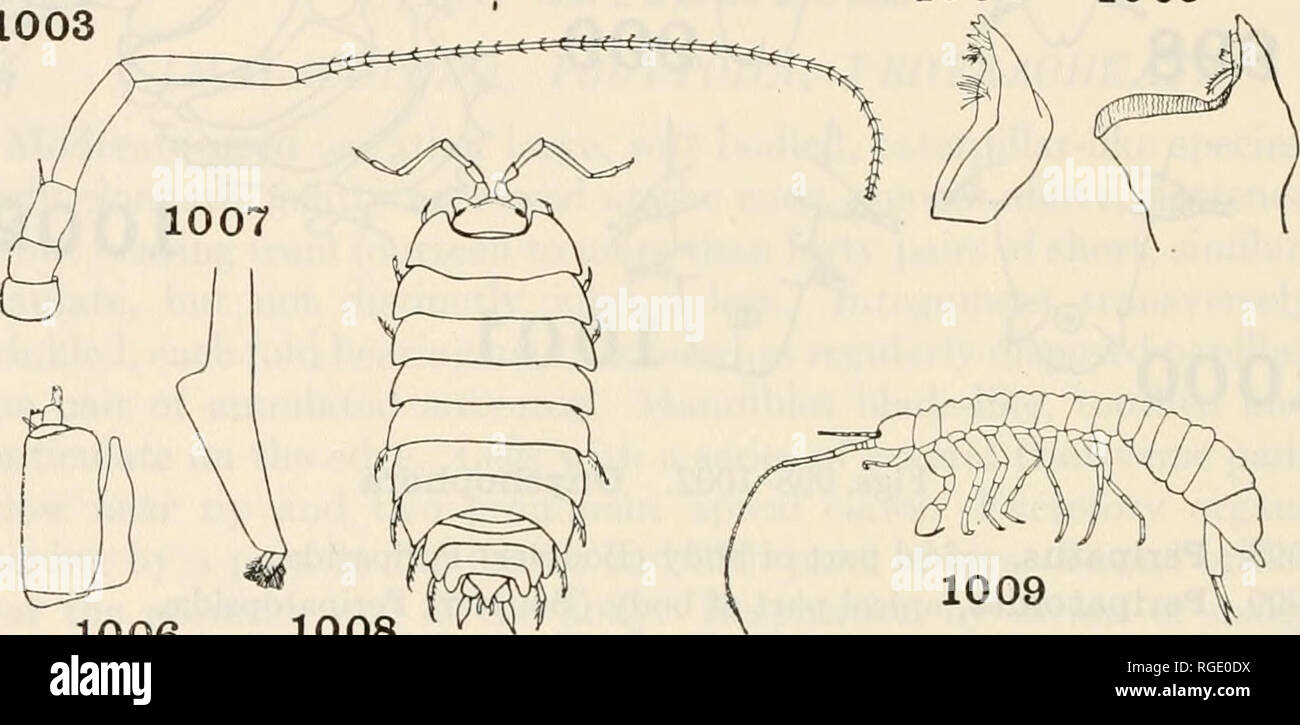. Bulletin of the Museum of Comparative Zoology at Harvard College. Zoology. 534 bulletin: museum of comparative zoology CLASS CRUSTACEA ORDER ISOPODA As this group of Crustacea includes a small number of terrestrial forms, these have been included, especially since a few species occur abundantly in places where insects are commonly found. Two sub- orders are represented among the actually terrestrial species. 1. Body more or less depressed, coxae of the walking legs developed into plate-like structures and fused with the tergites. (Suborder ONISCOIDEA) 2 1003 1004 1005. 1009 1006 1008 Figs. 1

Image details
Contributor:
Book Worm / Alamy Stock PhotoImage ID:
RGE0DXFile size:
7.1 MB (194.6 KB Compressed download)Releases:
Model - no | Property - noDo I need a release?Dimensions:
2261 x 1105 px | 38.3 x 18.7 cm | 15.1 x 7.4 inches | 150dpiMore information:
This image is a public domain image, which means either that copyright has expired in the image or the copyright holder has waived their copyright. Alamy charges you a fee for access to the high resolution copy of the image.
This image could have imperfections as it’s either historical or reportage.
. Bulletin of the Museum of Comparative Zoology at Harvard College. Zoology. 534 bulletin: museum of comparative zoology CLASS CRUSTACEA ORDER ISOPODA As this group of Crustacea includes a small number of terrestrial forms, these have been included, especially since a few species occur abundantly in places where insects are commonly found. Two sub- orders are represented among the actually terrestrial species. 1. Body more or less depressed, coxae of the walking legs developed into plate-like structures and fused with the tergites. (Suborder ONISCOIDEA) 2 1003 1004 1005. 1009 1006 1008 Figs. 1003-1009. Isopoda 1003. Ligidium, second antenna (Richardson) Ligiidse. 1004. Philoscia, mandible (Richardson) Oniscidae. 1005. Haplophthalmus, mandible (Richardson) Trichoniscidse. 1006. Porcellio, maxilliped (Richardson) Oniscidae. 1007. Philoscia, first maxilla (Richardson) Oniscidse. 1008. Porcellio (Richardson) Oniscidse. 1009. Phreatoicus (Richardson) Phreatoicidse. Body more or less compressed; coxae small, the last six pairs free. (Fig. 1009). (Phreatoicopsis, Hypsimetdpus). (Suborder PHREATOICOIDEA) PHREATOICID^ 2. Uropods not forming an operculum to cover the walking legs; abdominal segments freely movable 3 Uropods forming an operculum or cover which conceals the walk- ing legs. (Tylos) T YLID-ffi. Please note that these images are extracted from scanned page images that may have been digitally enhanced for readability - coloration and appearance of these illustrations may not perfectly resemble the original work.. Harvard University. Museum of Comparative Zoology. Cambridge, Mass. : The Museum